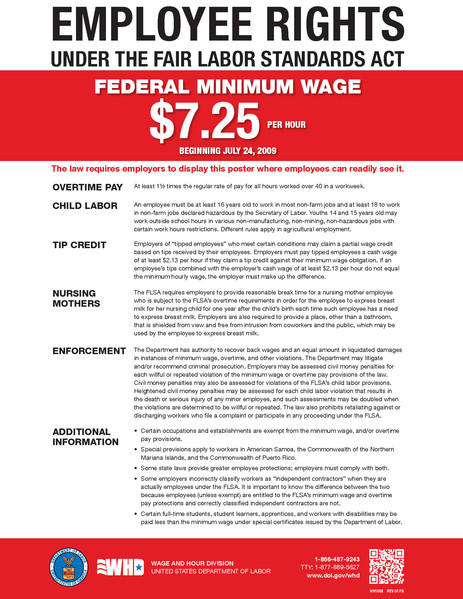A minimum wage is the least pay that workers can legally pay employees in exchange for their labor. The minimum wage has been a controversial subject since its introduction in the United States. The minimum wage does not change with the rising cost of living and it wholly depends on negotiations between the government and the employers. The first minimum wage as introduced in 1938 and since then, it has been changed 22 times. The push for minimum wage began in Europe.
History

The minimum wage began at the time when sweatshops were employing women and children and paying them peanuts in the early 1900s. This was during the industrialization era. From what the workers were paid, they could not afford to life necessities while they worked for long hours. The working conditions were also not conducive and this led to the rise of social activists who were advocating for social reforms for workers.
Various groups advocated for better working conditions, among them religious leaders, scholars, politicians and women’s organizations. This led to the introduction of minimum wages that only applied to women and children. It was challenged in a court and declared unconstitutional in 1923. However, President Franklin Roosevelt’s government enacted the Fair Labor Standards Act (FLSA) in 1938. The Act was challenged but was validated by the Supreme Court in 1941.
The state of Massachusetts was the first American state to introduce the minimum wage for women and children in 1912. The other states came up with a similar protective measure to protect workers in industries. However, the national statutory minimum wage requirement was first introduced in 1938. All other states introduced the minimum wage requirement apart from Mississippi, South Carolina, Tennessee, Alabama and Louisiana.
In 1923, the US Supreme Court, in the case of Adkins versus Children’s Hospital of DC, ruled that the minimum wage violated employers’ and workers’ right to liberty. This led to the invalidation of the states’ minimum wage laws. Industries were left at their own discretion to set their own regulations and standards. The cotton industry set a minimum weekly wage of $13 in the northern states and $12 for the southern states.
These states have no minimum wage: Alabama, Louisiana, Mississippi, South Carolina and Tennessee.
Big Win for Minimum Wage Law
In 1937, the Supreme Court of the US upheld Washington’s state minimum wage and stated that the minimum wage did not violate the constitution. In 1938, Congress passed the Fair Labor Standards Act that set the minimum wage to 25 cents per hour.
It was followed by a raised in the minimum wage in 1949 to 75 cents per hour. This marked the first increase that was followed by others later. In 1961, there was an amendment that allowed business people to hire students on a full-time basis at a rate that is 15 percent less than the minimum wage. In 1963, President John F Kennedy signed a law that required equal pay to workers regardless of their gender. In 1974, the Congress broadened the minimum wage so that it could cover all government workers.
However, in 1989, Congress amended the FLSA so that it can only apply to businesses that generate revenues more than $500,000. The amendment was to include small companies when they produce goods that will be sold to other states. In 2009, Congress raised the minimum wage further to $7.25. In 2016, New York and California passed an increase in the minimum wage to $15 per hour. By 2019, thirty states had minimum wages that were higher than the federal standards.

Conclusion
Minimum wage is an excellent tool to help workers to earn enough pay and meet their daily cost of living. However, the minimum wage does not always increase with the rising cost of living in the United States. Also, failure by the federal government to raise the minimum wage us a deterrent to accessing improved standards of living.
